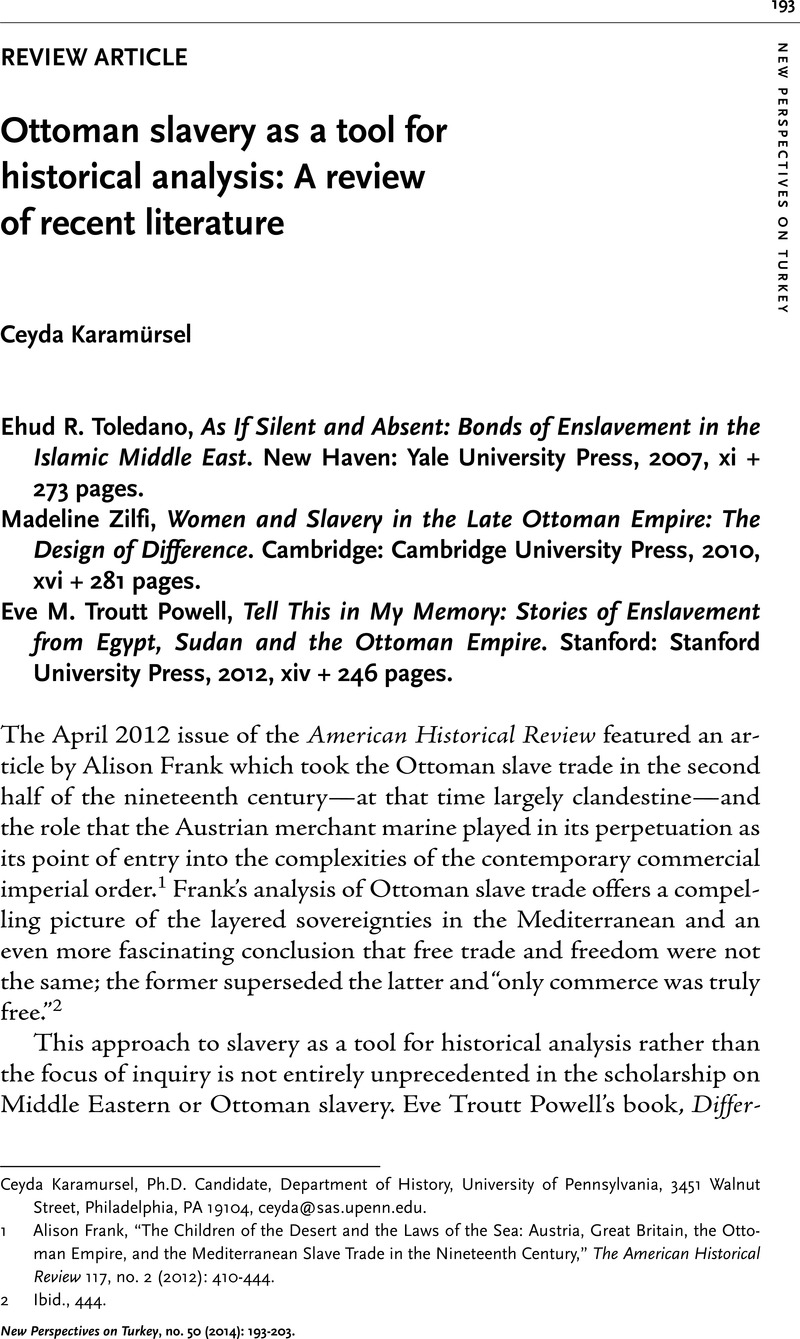Crossref Citations
This article has been cited by the following publications. This list is generated based on data provided by Crossref.
Frank Johnson, Alison
2020.
The Strange, Sad Case of the “Bosnian Christian Girl”: Slavery, Conversion, and Jurisdiction on the Habsburg-Ottoman Border.
Austrian History Yearbook,
Vol. 51,
Issue. ,
p.
39.



